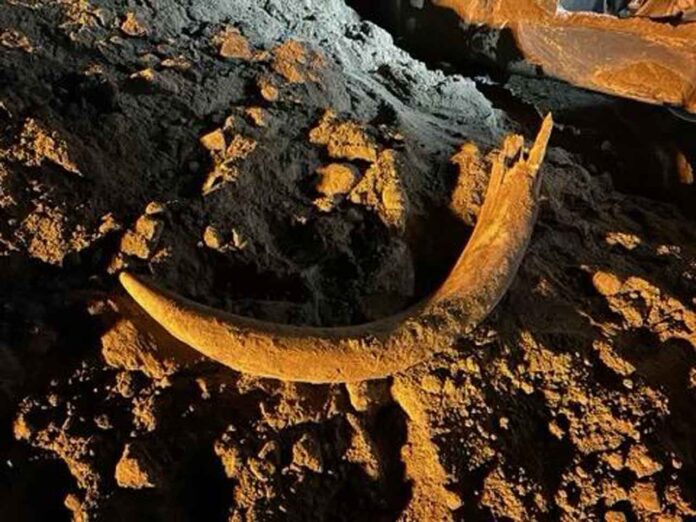Beulah, North Dakota – In an unusual turn of events, coal miners at the Freedom Mine near Beulah, North Dakota stumbled upon a rare and well-preserved mammoth specimen, including a seven-foot-long tusk, during the early hours of Memorial Day weekend last May.
The discovery was promptly recognized for its significance, leading to the site’s immediate closure until experts from the North Dakota Geological Survey, the State Historical Society of North Dakota, and the Bureau of Land Management could assess and document the find.
Extraordinary Find by Coal Miners
Coal miners working diligently at the Freedom Mine made the extraordinary discovery, which captured the attention of the scientific community. The site was secured to ensure its preservation while experts prepared to investigate further.
Scientific Significance of the Discovery
A dedicated team of paleontologists from the North Dakota Geological Survey embarked on a twelve-day excavation adventure. Their mission was to uncover the ancient streambed where these invaluable fossils were interred thousands of years ago. During the excavation, they successfully retrieved over twenty bones from the mammoth’s skeleton, including ribs, a shoulder blade, a tooth, and parts of the hips.
According to Clint Boyd, Senior Paleontologist for the North Dakota Geological Survey, “Most mammoth fossils found in North Dakota consist of isolated bones and teeth. This specimen, as one of the most complete mammoth skeletons discovered in North Dakota, is both thrilling and scientifically significant.” It’s worth noting that the mining activities in the region played a crucial role in uncovering this remarkable find.
Preservation and Research Efforts Underway
To ensure the mammoth’s delicate remains remain intact, the bones were encased in protective plaster jackets and transported to the Paleontology Lab at the North Dakota Heritage Center & State Museum in Bismarck. Here, a meticulous process to cleanse the fossils of sediment and stabilize them has commenced.
Educational Outreach and Public Display Plans
Collaborative efforts between the North Dakota Geological Survey and the Freedom Mine are underway to formulate an educational outreach program. Discussions include potential locations for the public display of these fossils, with the primary aim of sharing this remarkable specimen with as many people as possible. The discovery offers a unique opportunity to learn about North Dakota’s prehistoric past during the Ice Age.
A Glimpse into North Dakota’s Ice Age
During the Pleistocene Epoch, commonly referred to as the Ice Age, mammoths roamed North Dakota, eventually becoming extinct in the area around 10,000 years ago. Various species of mammoths, including the Woolly Mammoth and the Columbian Mammoth, coexisted with other iconic creatures such as saber-toothed tigers and giant sloths. Once the bones are meticulously cleaned, experts will identify the specific mammoth species from the mine, shedding light on North Dakota’s fascinating history during this bygone era.
As research and preservation efforts continue, the discovery promises to provide invaluable insights into the ancient past of North Dakota, enriching our understanding of the region’s natural history.

